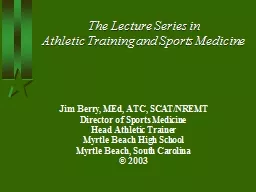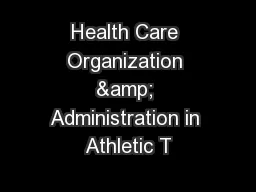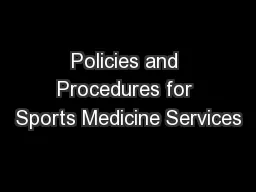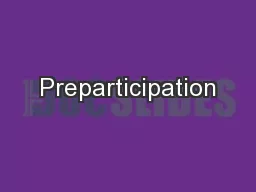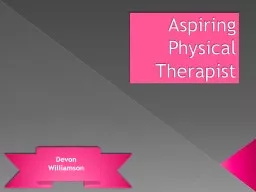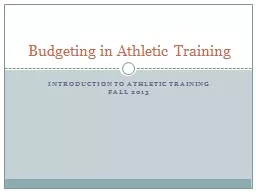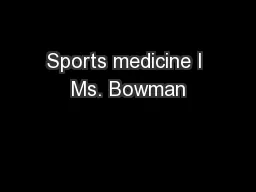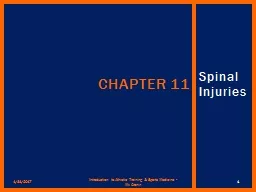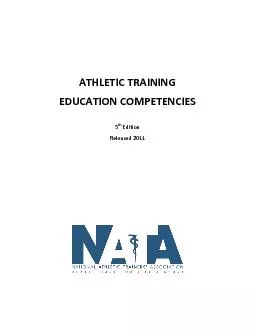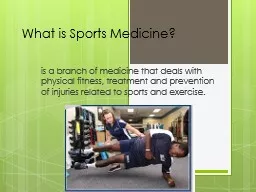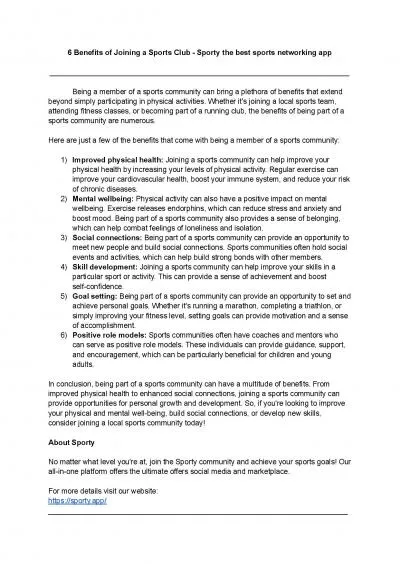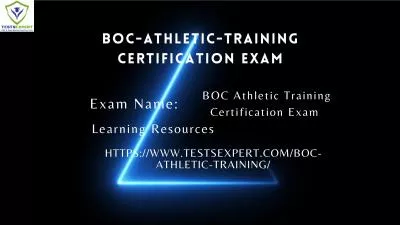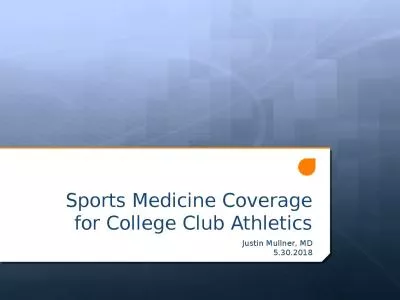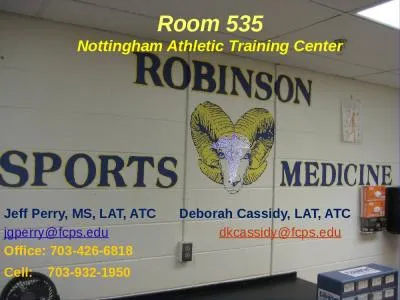PPT-The Lecture Series in Athletic Training and Sports Medicine
Author : likets | Published Date : 2020-07-01
Jim Berry MEd ATC SCATNREMT Director of Sports Medicine Head Athletic Trainer Myrtle Beach High School Myrtle Beach South Carolina 2003 Chapter 1 Fitness Professionals
Presentation Embed Code
Download Presentation
Download Presentation The PPT/PDF document "The Lecture Series in Athletic Training ..." is the property of its rightful owner. Permission is granted to download and print the materials on this website for personal, non-commercial use only, and to display it on your personal computer provided you do not modify the materials and that you retain all copyright notices contained in the materials. By downloading content from our website, you accept the terms of this agreement.
The Lecture Series in Athletic Training and Sports Medicine: Transcript
Download Rules Of Document
"The Lecture Series in Athletic Training and Sports Medicine"The content belongs to its owner. You may download and print it for personal use, without modification, and keep all copyright notices. By downloading, you agree to these terms.
Related Documents

